- Home
- William Shakespeare
Twelfth Night Page 2
Twelfth Night Read online
Page 2
MASTER-MISTRESS
The play begins with what sounds very like a fifteen-line unrhymed sonnet, spoken in the voice of an archetypal Renaissance lover, an aficionado of the great Italian poet Petrarch's sonnets in praise of his lovely but unobtainable Laura. This kind of love thrives on unrequitedness. The poet-lover uses imagery of music and the sea, of food, of rising and falling. Such language is typical of the vogue for sonneteering in the 1590s: every self-respecting Elizabethan poet had a sheaf of sonnets to his or her name. Like the conventional sonneteers, Orsino alludes to figures from classical mythology, in his case Ovid's Actaeon hunted down by the dogs of his own desire for lovely but chaste Diana. When Olivia appears, Orsino says that "heaven walks on earth," which is just what an orthodox sonneteer would say. He revels in the "sovereign cruelty" of his stony lady, as all Petrarchan lovers do.
But he is then thrown by the beauty of a lovely boy. The audience, however, knows that Cesario is really Viola, a girl in disguise, and that the body parts so lovingly blazoned by Orsino really are the "woman's part"--except they are not, since (at least the majority of) the audience also knows that Viola is a part written for a boy actor. "Thou dost speak masterly" says Orsino in response to Cesario's eloquence. In so doing, he allows himself to become the master mastered by the servingman. Or rather the boy. Or is that the girl? Or the boy actor?
Orsino claims that a woman's love is of less value than a man's because it is driven solely by "appetite," which may be sated, whereas his capacity for desire is infinite:
There is no woman's sides
Can bide the beating of so strong a passion
As love doth give my heart, no woman's heart So big, to hold so much. They lack retention.
Alas, their love may be called appetite,
No motion of the liver, but the palate,
That suffer surfeit, cloyment and revolt.
But mine is all as hungry as the sea,
And can digest as much....
Here he again resembles a sonneteer, whose love is limitless because it is defined by being unrequited. And when he reappears at the end of the play, Orsino duly speaks another of his fifteen-line sonnets, this one ending with the most hackneyed rhyme in the sonneteer's repertoire:
Why should I not, had I the heart to do it,
Like to th'Egyptian thief at point of death, Kill what I love? -- a savage jealousy
That sometimes savours nobly. But hear me this: Since you to non-regardance cast my faith,
And that I partly know the instrument
That screws me from my true place in your favour, Live you the marble-breasted tyrant still.
But this your minion, whom I know you love,
And whom, by heaven I swear, I tender dearly, Him will I tear out of that cruel eye,
Where he sits crowned in his master's spite.
Come, boy, with me. My thoughts are ripe in mischief: I'll sacrifice the lamb that I do love,
To spite a raven's heart within a dove.
But then he discovers that Cesario is really Viola and he is able to resolve the tension--which is also the tension of Shakespeare's sonnets--between love for a lovely boy and desire for a woman:
Your master quits you. And for your service done him, So much against the mettle of your sex,
So far beneath your soft and tender breeding, And since you called me master for so long,
Here is my hand. You shall from this time be Your master's mistress.
If Orsino is the conventional Elizabethan sonneteer, Olivia is parodist of the genre. The sonneteer customarily enumerates his lady's beautiful body parts, one by one in that device known as the "blazon." Olivia enumerates her own: "I will give out divers schedules of my beauty. It shall be inventoried, and every particle and utensil labelled to my will: as, item, two lips, indifferent red: item, two grey eyes, with lids to them: item, one neck, one chin and so forth." But then love--for Cesario--catches up on her and she finds herself deploying the blazon in all seriousness: "Thy tongue, thy face, thy limbs, actions and spirit, / Do give thee five-fold blazon." She begins to wish that "the master were the man"--or the man her master. Viola, meanwhile, gains a voice by becoming Cesario. In the sonnet form, the object of desire is just that, an object. In Twelfth Night, Viola, desired by both man and woman, is a feeling subject. Vulnerable, and thus forced to become an actor ("I am not that I play"), she soon finds herself in the situation of desiring the man she has been sent to persuade to love someone else--an analogous twist to that of Shakespeare's sonnets, which begin with the speaker persuading the fair youth to marry, then dissolve into the speaker's own love for the youth.
Sonnet 20 startlingly begins "A woman's face with Nature's own hand painted / Hast thou, the master-mistress of my passion." There is only one other phrase in the literature of the age that may be readily compared with the coinage "master-mistress": Orsino's "Your master's mistress." Perhaps as good an answer as any to the hoary old question of the identity of the lovely youth to whom the bulk of Shakespeare's sonnets are addressed is "a figure who resembles Cesario."
Twelfth Night is an extraordinary exploration of the permutations of desire or, to use the terminology of an Elizabethan admirer of Shakespeare called Francis Meres, of "the perplexities of love." Both Orsino and Olivia love Viola in her disguise as Cesario. Viola loves, and wins, Orsino, while Olivia has to settle for Sebastian. Orsino insists on continuing to call Viola Cesario even after he knows that she is a woman. Sebastian is puzzled, though grateful, to find himself whisked to the altar by the wealthy and beautiful Olivia, but he cannot have had time to fall in love with her. The person who really loves him is Antonio, who reminds him that for three months, "No interim, not a minute's vacancy, Both day and night did we keep company." He follows his beloved despite the risk to his own life: "But come what may, I do adore thee so, That danger shall seem sport, and I will go." Like a sonneteer, he speaks of being spurred on by his "desire, More sharp than filed steel" and, again, of paying "devotion" to "his image, which methought did promise Most venerable worth." He is rewarded for his devotion by being left alone and melancholy, again in the exact manner of a sonneteer turned away by his frosty mistress. It is very easy to imagine Antonio going away at the end of Twelfth Night and writing something on the following lines, addressed to Sebastian:
They that have power to hurt and will do none, That do not do the thing they most do show,
Who, moving others, are themselves as stone, Unmoved, cold, and to temptation slow:
They rightly do inherit heaven's graces
And husband nature's riches from expense.
They are the lords and owners of their faces, Others but stewards of their excellence.
This is actually the speaker of Shakespeare's sonnets (in Sonnet 94) as he finds himself rejected by the fair youth or the lovely boy. In so many of the plays it is Shakespeare's chilly, self-controlled young men--Prince Hal in Henry IV, Angelo in Measure for Measure, Bertram in All's Well That Ends Well--who take, who are the lords and owners of their faces. His open hearted women--Rosalind in As You Like It, Innogen in Cymbeline, Viola above all--are never like this. They do do the things they most do show. They move others but they are never stone themselves, unless men turn them to coldness. His women give--of their selves, their wit, and their courage. And that is why his women's parts, even though written for boys, have been great gifts to actresses down the ages.
ABOUT THE TEXT
Shakespeare endures through history. He illuminates later times as well as his own. He helps us to understand the human condition. But he cannot do this without a good text of the plays. Without editions there would be no Shakespeare. That is why every twenty years or so throughout the last three centuries there has been a major new edition of his complete works. One aspect of editing is the process of keeping the texts up to date--modernizing the spelling, punctuation, and typography (though not, of course, the actual words), providing explanatory notes in the light of changing educational practi
ces (a generation ago, most of Shakespeare's classical and biblical allusions could be assumed to be generally understood, but now they can't).
Because Shakespeare did not personally oversee the publication of his plays, with some plays there are major editorial difficulties. Decisions have to be made as to the relative authority of the early printed editions, the pocket format "quartos" published in Shakespeare's lifetime, and the elaborately produced "First Folio" text of 1623, the original "Complete Works" prepared for the press after his death by Shakespeare's fellow actors, the people who knew the plays better than anyone else. Twelfth Night, however, exists only in a Folio text that is exceptionally well printed. It is one of the few Shakespeare plays where there is hardly any textual difficulty or controversy.
The following notes highlight various aspects of the editorial process and indicate conventions used in the text of this edition:
Lists of Parts are supplied in the First Folio for only six plays, not including Twelfth Night, so the list here is editorially supplied. Capitals indicate that part of the name which is used for speech headings in the script (thus "SIR TOBY Belch, Olivia's kinsman").
Locations are provided by the Folio for only two plays, of which Twelfth Night is not one. Eighteenth-century editors, working in an age of elaborately realistic stage sets, were the first to provide detailed locations ("another part of the town"). Given that Shakespeare wrote for a bare stage and often an imprecise sense of place, we have relegated locations to the explanatory notes, where they are given at the beginning of each scene where the imaginary location is different from the one before. In the case of Twelfth Night, the entire action is set in Illyria, on the eastern Adriatic coast, and moves principally between the households of Duke Orsino and Countess Olivia.
Act and Scene Divisions were provided in the Folio in a much more thoroughgoing way than in the Quartos. Sometimes, however, they were erroneous or omitted; corrections and additions supplied by editorial tradition are indicated by square brackets. Five-act division is based on a classical model, and act breaks provided the opportunity to replace the candles in the indoor Blackfriars playhouse which the King's Men used after 1608, but Shakespeare did not necessarily think in terms of a five-part structure of dramatic composition. The Folio convention is that a scene ends when the stage is empty. Nowadays, partly under the influence of film, we tend to consider a scene to be a dramatic unit that ends with either a change of imaginary location or a significant passage of time within the narrative. Shakespeare's fluidity of composition accords well with this convention, so in addition to act and scene numbers we provide a running scene count in the right margin at the beginning of each new scene, in the typeface used for editorial directions. Where there is a scene break caused by a momentary bare stage, but the location does not change and extra time does not pass, we use the convention running scene continues. There is inevitably a degree of editorial judgment in making such calls, but the system is very valuable in suggesting the pace of the plays.
Speakers' Names are often inconsistent in Folio. We have regularized speech headings, but retained an element of deliberate inconsistency in entry directions, in order to give the flavor of Folio. Thus FESTE is always so-called in his speech headings, but is generally "Clown" in entry directions.
Verse is indicated by lines that do not run to the right margin and by capitalization of each line. The Folio printers sometimes set verse as prose, and vice versa (either out of misunderstanding or for reasons of space). We have silently corrected in such cases, although in some instances there is ambiguity, in which case we have leaned toward the preservation of Folio layout. Folio sometimes uses contraction ("turnd" rather than "turned") to indicate whether or not the final "-ed" of a past participle is sounded, an area where there is variation for the sake of the five-beat iambic pentameter rhythm. We use the convention of a grave accent to indicate sounding (thus "turned" would be two syllables), but would urge actors not to overstress. In cases where one speaker ends with a verse half line and the next begins with the other half of the pentameter, editors since the late eighteenth century have indented the second line. We have abandoned this convention, since the Folio does not use it, nor did actors' cues in the Shakespearean theater. An exception is made when the second speaker actively interrupts or completes the first speaker's sentence.
Spelling is modernized, but older forms are very occasionally maintained where necessary for rhythm or aural effect.
Punctuation in Shakespeare's time was as much rhetorical as grammatical. "Colon" was originally a term for a unit of thought in an argument. The semicolon was a new unit of punctuation (some of the Quartos lack them altogether). We have modernized punctuation throughout, but have given more weight to Folio punctuation than many editors, since, though not Shakespearean, it reflects the usage of his period. In particular, we have used the colon far more than many editors: it is exceptionally useful as a way of indicating how many Shakespearean speeches unfold clause by clause in a developing argument that gives the illusion of enacting the process of thinking in the moment. We have also kept in mind the origin of punctuation in classical times as a way of assisting the actor and orator: the comma suggests the briefest of pauses for breath, the colon a middling one, and a full stop or period a longer pause. Semicolons, by contrast, belong to an era of punctuation that was only just coming in during Shakespeare's time and that is coming to an end now: we have accordingly only used them where they occur in our copy texts (and not always then). Dashes are sometimes used for parenthetical interjections where the Folio has brackets. They are also used for interruptions and changes in train of thought. Where a change of addressee occurs within a speech, we have used a dash preceded by a period (or occasionally another form of punctuation). Often the identity of the respective addressees is obvious from the context. When it is not, this has been indicated in a marginal stage direction.
Entrances and Exits are fairly thorough in Folio, which has accordingly been followed as faithfully as possible. Where characters are omitted or corrections are necessary, this is indicated by square brackets (e.g. "[and Attendants]"). Exit is sometimes silently normalized to Exeunt and Manet anglicized to "remains." We trust Folio positioning of entrances and exits to a greater degree than most editors.
Editorial Stage Directions such as stage business, asides, indications of addressee and of characters' position on the gallery stage are only used sparingly in Folio. Other editions mingle directions of this kind with original Folio and Quarto directions, sometimes marking them by means of square brackets. We have sought to distinguish what could be described as directorial interventions of this kind from Folio-style directions (either original or supplied) by placing them in the right margin in a smaller typeface. There is a degree of subjectivity about which directions are of which kind, but the procedure is intended as a reminder to the reader and the actor that Shakespearean stage directions are often dependent upon editorial inference alone and are not set in stone. We also depart from editorial tradition in sometimes admitting uncertainty and thus printing permissive stage directions, such as an Aside? (often a line may be equally effective as an aside or as a direct address--it is for each production or reading to make its own decision) or a may exit or a piece of business placed between arrows to indicate that it may occur at various different moments within a scene.
Line Numbers are editorial, for reference and to key the explanatory and textual notes.
Explanatory Notes explain allusions and gloss obsolete and difficult words, confusing phraseology, occasional major textual cruces, and so on. Particular attention is given to nonstandard usage, bawdy innuendo, and technical terms (e.g. legal and military language). Where more than one sense is given, commas indicate shades of related meaning, slashes alternative or double meanings.
Textual Notes at the end of the play indicate major departures from the Folio. They take the following form: the reading of our text is given in bold and its source given after an equals sign,
with "Q" indicating a Quarto reading, "F2" a reading that derives from the Second Folio of 1632, "F3" from the Third Folio of 1663, and "Ed" that it derives from the subsequent editorial tradition. The rejected Folio ("F") reading is then given. Thus, for example, "2.3.24 leman = Ed. F = Lemon" means that at Act 2 Scene 3 lines 23-24, the phrase "I sent thee sixpence for thy Lemon" clearly made little sense and a later editor has concluded that a compositor's (or possibly scribal) error occurred and emended it to "leman," meaning "sweetheart."
KEY FACTS
MAJOR PARTS: (with percentages of lines/number of speeches/scenes on stage) Sir Toby Belch (13%/152/10), Viola (13%/121/8), Olivia (12%/118/6), Feste (12%/104/7), Malvolio (11%/87/7), Orsino (9%/59/4), Sir Andrew (6%/88/8), Maria (6%/59/6), Sebastian (5%/31/5), Fabian (4%/51/4), Antonio (4%/26/4).
LINGUISTIC MEDIUM: 40% verse, 60% prose.
DATE: 1601: Performed at Middle Temple February 1602; not mentioned by Meres 1598; alludes to Anthony Sherley's visit to the Persian Sophy (1598-1601) and to a map first published in 1599; parodies the motif of self-love, double title, and use of word "element" in Ben Jonson's The Fountain of Self-Love, or Cynthia's Revels (late 1600/early 1601), while a character in Jonson's Poetaster (performed later in 1601) seems to say that he has been to a performance of Twelfth Night.
SOURCES: Main plot adapted from the story of "Apollonius and Silla" in Barnaby Riche's Riche his Farewell to Military Profession (1581), though the motif of the cross-dressed disguised "page" wooing a lady on behalf of a master whom she loves herself is derived from a series of Italian comedies going back to Gl'Ingannati ("The Deceived"), an extremely bawdy play performed by "The Academy of the Thunderstruck" in Siena (1537). The mistaking of twins is bred from Plautus' Menaechmi by way of Shakespeare's own Comedy of Errors. There is no clear source for the Sir Toby/Malvolio plot.

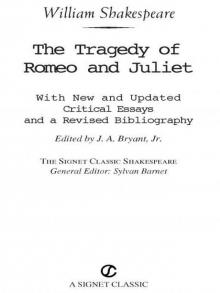 Romeo and Juliet
Romeo and Juliet As You Like It (Folger Shakespeare Library)
As You Like It (Folger Shakespeare Library)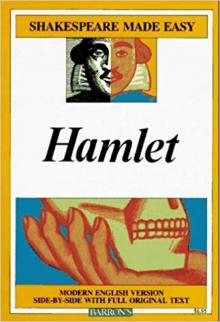 Hamlet
Hamlet Richard II (Folger Shakespeare Library)
Richard II (Folger Shakespeare Library)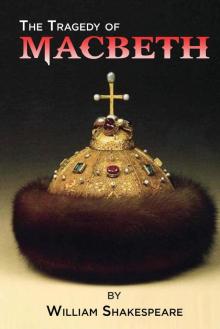 Macbeth
Macbeth Henry V
Henry V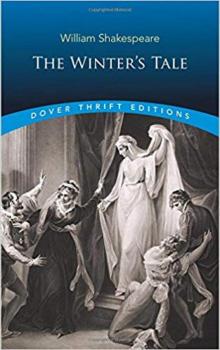 The Winter's Tale
The Winter's Tale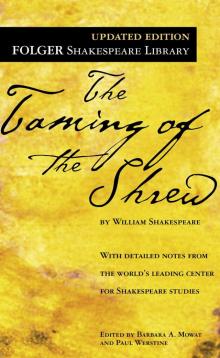 The Taming of the Shrew
The Taming of the Shrew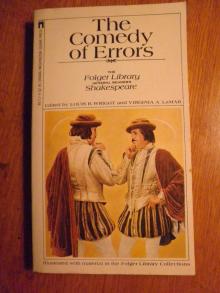 The Comedy of Errors
The Comedy of Errors King Lear (Folger Shakespeare Library)
King Lear (Folger Shakespeare Library)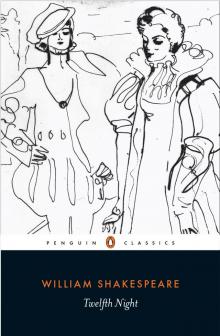 Twelfth Night
Twelfth Night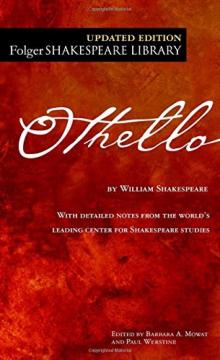 Othello
Othello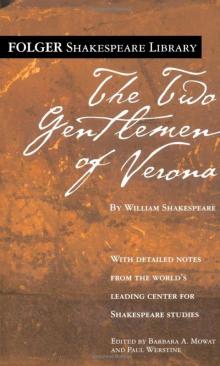 The Two Gentlemen of Verona
The Two Gentlemen of Verona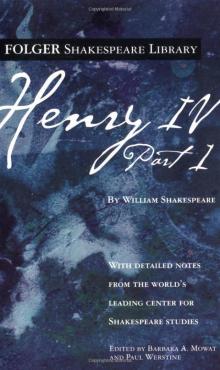 Henry IV, Part 1 (Folger Shakespeare Library)
Henry IV, Part 1 (Folger Shakespeare Library) King John/Henry VIII (Signet Classics)
King John/Henry VIII (Signet Classics)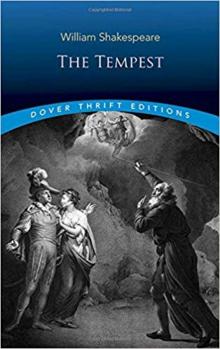 The Tempest
The Tempest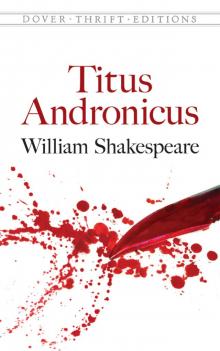 Titus Andronicus (Dover Publications)
Titus Andronicus (Dover Publications)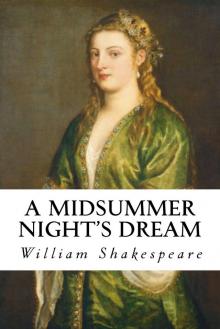 A Midsummer Night's Dream
A Midsummer Night's Dream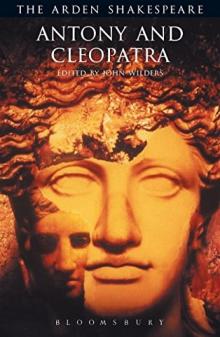 Antony and Cleopatra (Arden Shakespeare: Third Series)
Antony and Cleopatra (Arden Shakespeare: Third Series)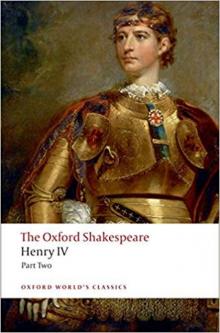 The Oxford Shakespeare: Henry IV, Part 2 (Oxford World's Classics)
The Oxford Shakespeare: Henry IV, Part 2 (Oxford World's Classics)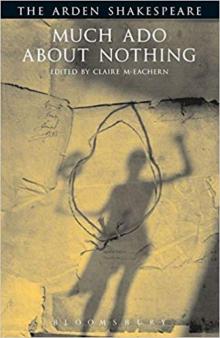 Much Ado About Nothing (Arden Shakespeare: Third Series)
Much Ado About Nothing (Arden Shakespeare: Third Series) All's Well That Ends Well
All's Well That Ends Well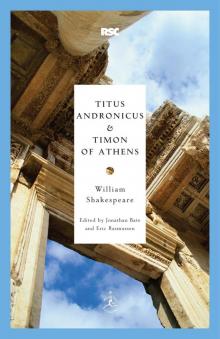 Titus Andronicus & Timon of Athens
Titus Andronicus & Timon of Athens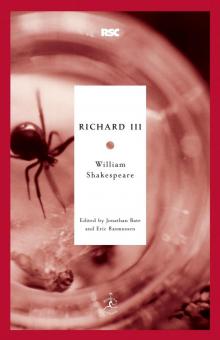 Richard III (Modern Library Classics)
Richard III (Modern Library Classics) Coriolanus
Coriolanus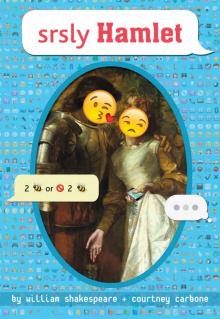 srsly Hamlet (OMG Shakespeare)
srsly Hamlet (OMG Shakespeare) The Merchant of Venice
The Merchant of Venice Richard III
Richard III Richard II
Richard II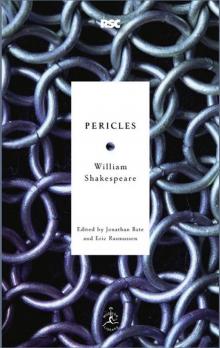 Pericles
Pericles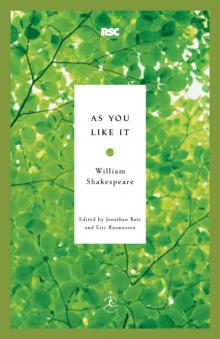 As You Like It
As You Like It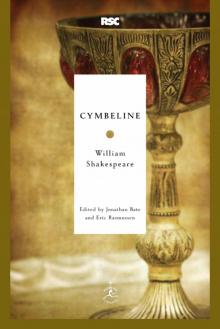 Cymbeline
Cymbeline Alls Wel that ends Well
Alls Wel that ends Well YOLO Juliet
YOLO Juliet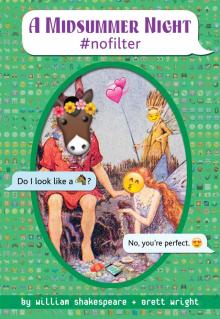 A Midsummer Night #nofilter
A Midsummer Night #nofilter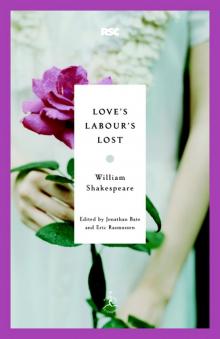 Love's Labour's Lost
Love's Labour's Lost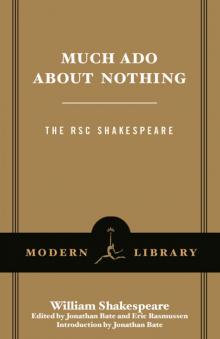 Much Ado About Nothing
Much Ado About Nothing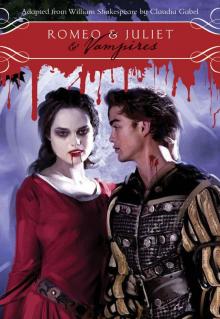 Romeo & Juliet & Vampires
Romeo & Juliet & Vampires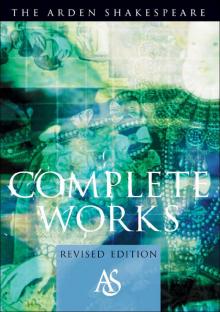 The Arden Shakespeare Complete Works
The Arden Shakespeare Complete Works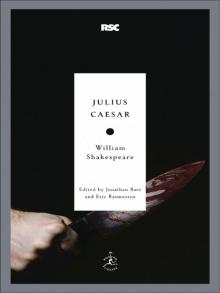 Julius Caesar
Julius Caesar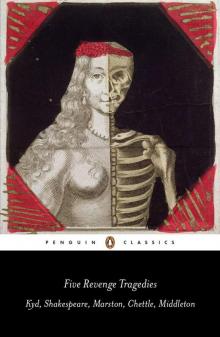 Five Revenge Tragedies: The Spanish Tragedy, Hamlet, Antonio's Revenge, The Tragedy of Hoffman, The Revenger's Tragedy (Penguin Classics)
Five Revenge Tragedies: The Spanish Tragedy, Hamlet, Antonio's Revenge, The Tragedy of Hoffman, The Revenger's Tragedy (Penguin Classics)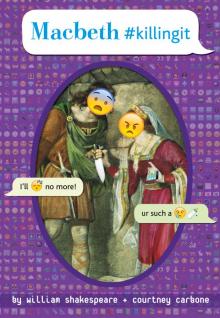 Macbeth #killingit
Macbeth #killingit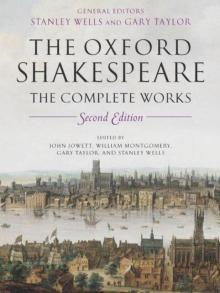 The Oxford Shakespeare: The Complete Works
The Oxford Shakespeare: The Complete Works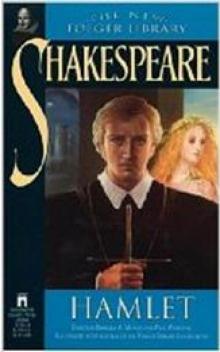 Hamlet, Prince of Denmark (Collins edition)
Hamlet, Prince of Denmark (Collins edition)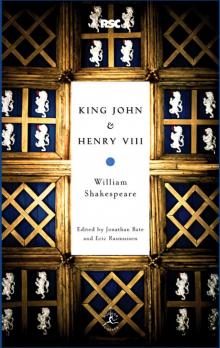 King John & Henry VIII
King John & Henry VIII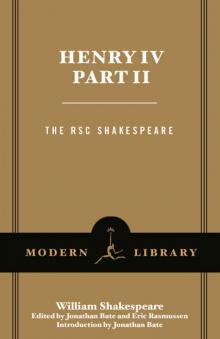 Henry IV, Part 2
Henry IV, Part 2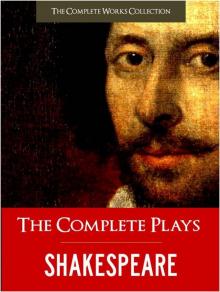 Complete Plays, The
Complete Plays, The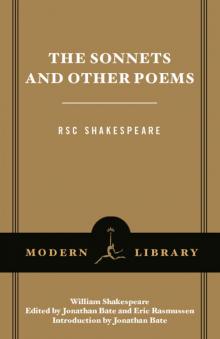 The Sonnets and Other Poems
The Sonnets and Other Poems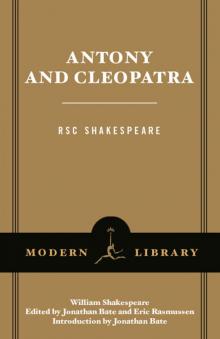 Antony and Cleopatra
Antony and Cleopatra Henry IV, Part 1
Henry IV, Part 1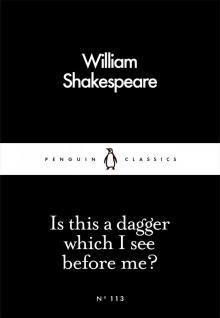 Is This a Dagger Which I See Before Me?
Is This a Dagger Which I See Before Me? The Complete Works of William Shakespeare In Plain and Simple English (Translated)
The Complete Works of William Shakespeare In Plain and Simple English (Translated)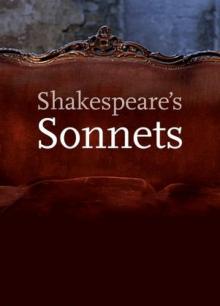 The Sonnets
The Sonnets